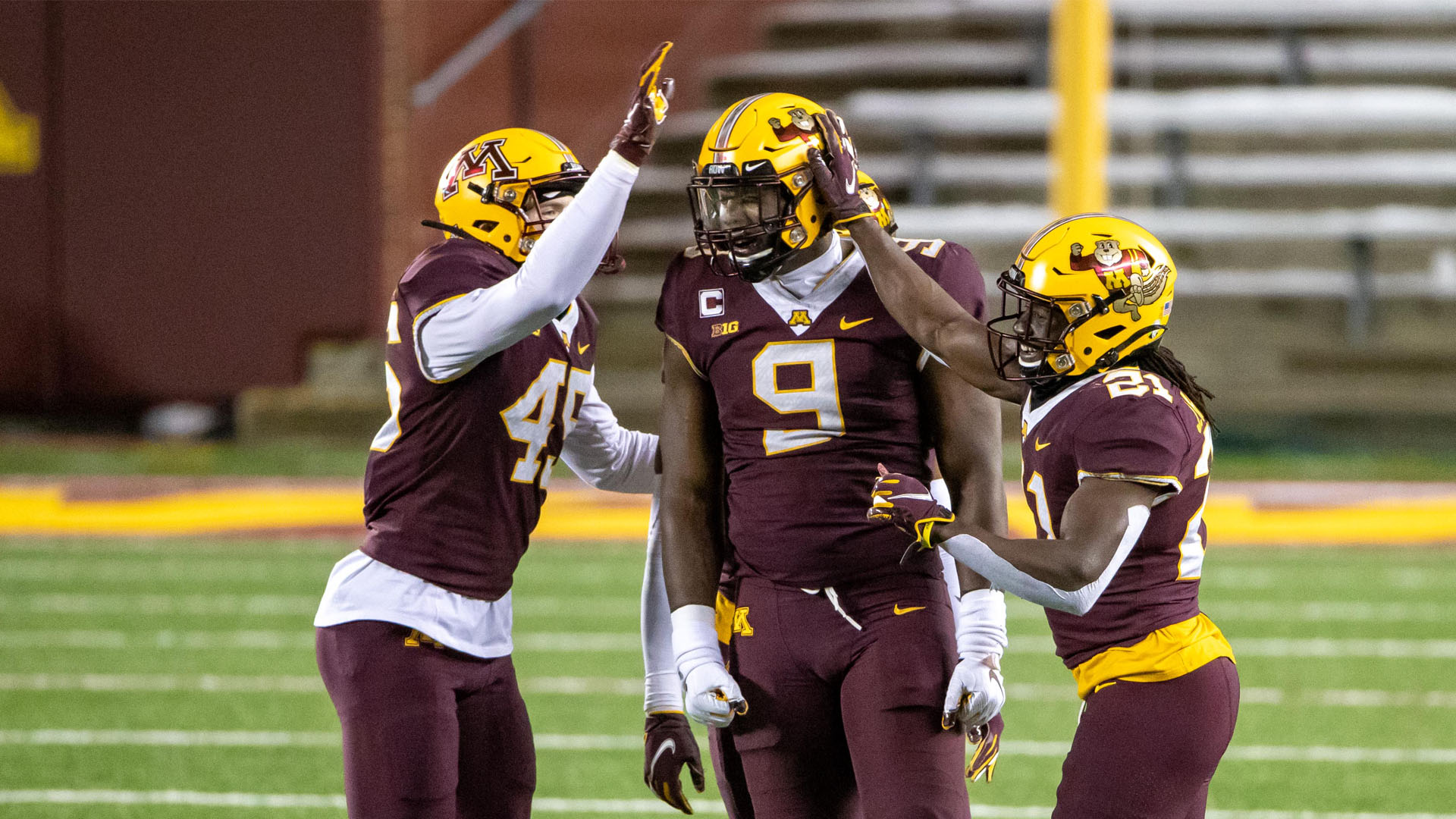Ad Disclosure

A key step toward the 2021 Minnesota Gophers football season took place this week when 12 newcomers — 6 freshmen and 6 transfers — joined the program.
Who knows how many of them crack the two-deep this fall? Who knows what this season will even look like? Will there be fans? How many? Nonconference games — what are those?
It all feels a long way off. But Minnesota is already into the thick of winter conditioning, and those new guys who are on campus get to take part.
Spring football, whatever form that takes with COVID-19 still raging, would normally begin in about six weeks.
The season, even during a pandemic, never sleeps. Which is why we’re taking an early look at what the Gophers’ starting lineup might look like this fall.
Minnesota brings back a bevy of experience on both sides of the ball. That’s thanks in part to the extra year of eligibility granted by the NCAA, and in part because the team played a large amount of underclassmen last season, especially on defense.
On offense, returning up to 10 of 11 guys with starting experience is a good thing. On defense, it might not be. While Minnesota finished 10th in the B1G in stopping opponents, it spent most of the season near the bottom of the league and was hapless against above-average offenses.
The Gophers are scheduled to open up Sept. 2 against Ohio State — yikes, even with someone other than Justin Fields at quarterback.
But there’s a lot that can happen between now and then, starting with winter workouts and continuing into a very important spring session as college football — and the nation — seeks a more recognizable cadence of existence.
With that, we make some assumptions here. Mainly, that anyone who hasn’t yet declared he’s moving on from the program is indeed coming back. That includes offensive linemen Daniel Faalele and Curtis Dunlap Jr., who both started on an 11-2 team in 2019 but didn’t play last season due to COVID and injury.
There could be transfers. There could be retirements.
But attrition and ailments aside, let’s begin.
Offense
QB: Tanner Morgan
RB: Mohamed Ibrahim
WR1: Chris Autman-Bell
WR2: Michael Brown-Stephens
WR3: Daniel Jackson
LT: Sam Schlueter
LG: Blaise Andries
C: Conner Olson
RG: Curtis Dunlap Jr.
RT: Daniel Faalele
TE: Ko Kieft
The skinny: The offensive line is the same as 2019, when Minnesota ran roughshod over most of the Big Ten and an SEC foe in Auburn. The running back behind them, in an absolute gift for the program, is still Mohamed Ibrahim, who likely would’ve earned an NFL roster spot had he decided to forego his second senior season. But the B1G running back of the year didn’t, which means quarterback Tanner Morgan will have all the help he wants from the ground game. The receiver position is the question mark. Autman-Bell has the makings of a worthy No. 1, but can Jackson, Brown-Stephens or another youngster emerge behind him?
Defense
DE: Boye Mafe
DT: Micah Dew-Treadway
DT: Nyles Pinckney
DE: Esezi Otomewo
LB: Mariano Sori-Marin
LB: Braelen Oliver
NB: Justus Harris
CB: Coney Durr
S: Michael Dixon
S: Jordan Howden
CB: Phil Howard
The skinny: The line could be the most improved unit on this team next season. It’s rife with experience, starting with Dew-Treadway — who will be a seventh-year senior — and via the transfer portal. Pinckney comes from Clemson having played in 55 games and logged more than 1,100 career snaps. Mafe and Otomewo are both capable rush ends. We give Sori-Marin and Oliver the incumbent nod at linebacker, but given that position’s struggles, don’t be surprised if a youngster such as James Gordon IV or transfer Jack Gibbens jumps into the mix. In the secondary, Howard takes over for Benjamin St-Juste, who declared for the NFL Draft, and Dixon gets the nod at strong safety over Tyler Nubin based on potential.
Final thought
It’s déjà vu all over again for Minnesota’s offense, which brought back all but one starter a year ago, too. It’s an anomaly only COVID could create, but the feeling is much different this time. Can the Gophers get back to their ground-and-pound, clock-control ways, especially with a defense that ranked toward the bottom of the FBS in several categories last season?
Ah, the defense. Coach P.J. Fleck preached balance between the short-term and long-term in analyzing the youth movement that came both out of necessity — Minnesota had more than 40 players out due to the virus at one point — and simple roster management. Will all the experience lead to improvement? Or will success come by an upgrade in talent? Fleck says this is a developmental program. The Gophers’ defensive performance will either validate or vilify the boisterous head coach.
Veteran sports writer Phil Ervin brings his expertise on Minnesota and B1G football to Saturday Tradition. Follow him on Twitter @PhilErvin.